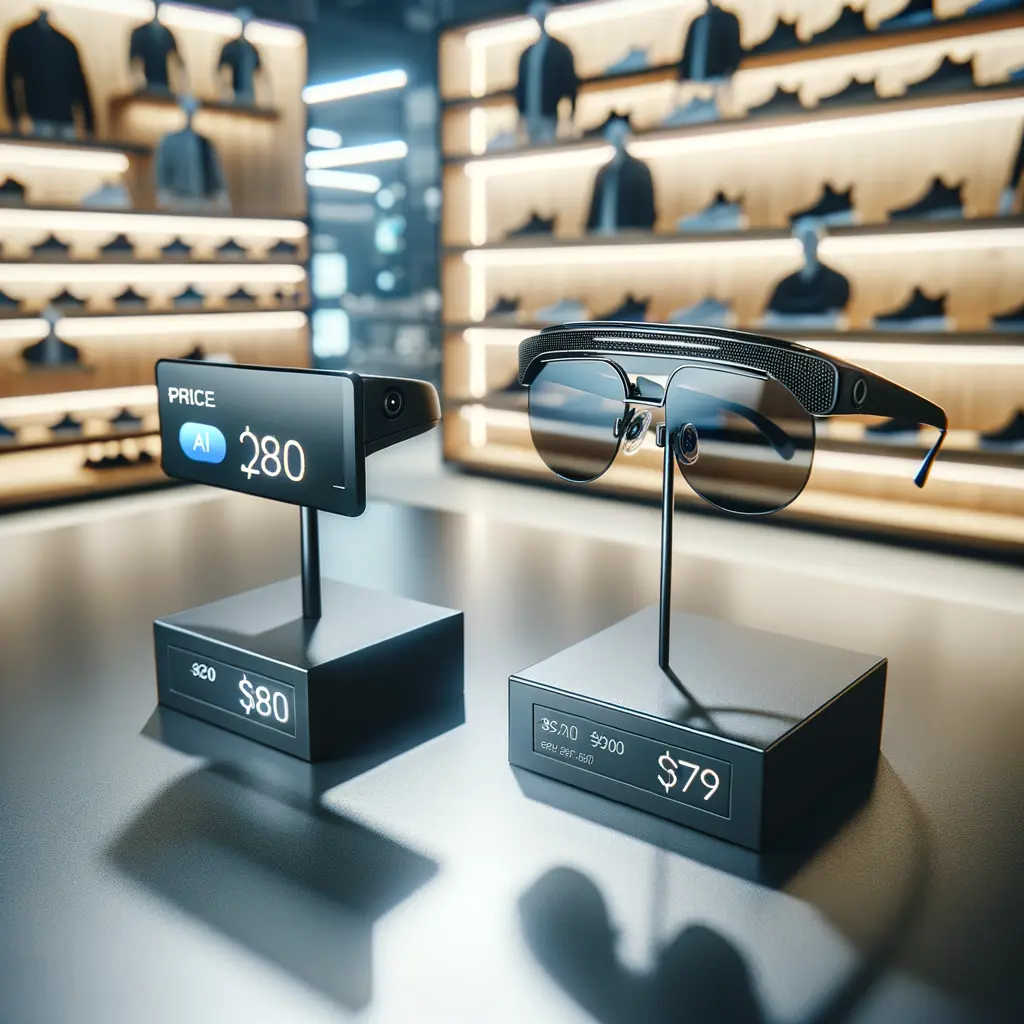Why Xiaomi AI Smart Glasses Are Turning Heads in 2025
The wearable tech market has exploded, but nothing has created as much buzz as the new Xiaomi AI smart glasses. While competitors fight for attention with heavy frames and sky-high prices, Xiaomi has quietly launched a pair of AI smart glasses that cost less than half of what Meta charges yet feel lighter, work smarter and last longer. In this review we break down exactly why these glasses matter, what they get right, and where first-generation rough edges still show. Whether you’re a content creator wanting a hands-free 2K camera, a commuter who needs seamless audio without blocking traffic noise, or simply a gadget fan searching for the best smart glasses 2025 has to offer, you’ll find actionable insight below. We’ll also point out internal resources—like our guide to choosing prescription lenses for wearables and a comparison of Ray-Ban Meta vs Echo Frames—for readers who want to explore related topics. Most importantly, we’ll help you decide if Xiaomi AI smart glasses belong on your face or in your shopping cart. Let’s dive into the specs, real-world performance, and clever engineering decisions that make these smart glasses a potential game-changer.

Hands-Free 2K Camera: Content Creation Made Effortless
For many buyers, the built-in 12-megapixel camera is the headline feature of Xiaomi AI smart glasses. Recording in a 4:3 master file lets you effortlessly reframe clips to 16:9 for YouTube or 9:16 for TikTok—no reshoots, no cropping headaches. A single tap snaps a photo; a long press starts video. The result is a wearable Steadicam that’s always ready when your hands are coated in flour, gripping bicycle handlebars, or steering a drone. Optical image stabilisation smooths out normal walking motion, and while quick head turns can still introduce blur (physics wins), footage remains noticeably steadier than that of most smart glasses with camera modules in this price range. Just as important, Xiaomi didn’t cram a tiny display into the lens area, keeping weight down and privacy concerns minimal. If you manage a food vlog, imagine filming a recipe while glancing at your ingredients, or recording a POV unboxing for your e-commerce followers. Pair the glasses with the companion app and you can transfer clips directly into CapCut or Premiere Rush. For deeper video gear talk, check our article on choosing ND filters for action cameras—many tips translate to wearable footage, too.

HyperOS Integration & Audio: The Brain and Voice of Your Glasses
Xiaomi opted for a clever split-processing architecture: the heavy AI lifting happens on your paired phone, preserving battery life and keeping the frames feather-light. Through HyperOS Assistant—or even ChatGPT via the mobile app—you can ask for reminders, dictate messages, or identify landmarks while traveling. A five-microphone array captures voice commands clearly, and dual open-ear drivers feed back crisp audio without sealing you off from traffic or office chatter. Commuters will appreciate listening to podcasts while still hearing platform announcements. Fitness enthusiasts can jog to their favourite playlist without sweat-trapping earbuds. Early adopters note a slight translation lag and that English responses occasionally trail behind Chinese, but firmware updates arrive quickly. If you crave deeper AR overlays, you’ll want to read our breakdown of the best AR smart glasses 2025; otherwise the balanced audio-first approach might be ideal. Noise leakage remains low enough that people two seats over won’t hear your playlists, but loud train cars can drown out softer dialogue—nothing a volume bump can’t fix. Overall, the AI smart glasses deliver a surprisingly natural conversational interface that feels more like talking to a friend than shouting at a gadget.
Design, Comfort & Battery Life: Wearing Tech All Day
At just 40 g—or 54 g with prescription lenses—the Xiaomi AI smart glasses disappear on your face in under five minutes. Xiaomi re-engineered the nose bridge to eliminate pressure-point fatigue, and the slightly squared frame geometry flatters a broad range of face shapes. Semi-transparent colour options showcase internal boards for a subtle cyber-punk vibe without screaming “I’m a prototype.” Remarkably, the eight-hour mixed-use battery matches a full workday. Need more? The angled magnetic USB-C cable can charge the glasses while worn; slip a 5,000 mAh power bank into your pocket and you’re effectively untethered indefinitely. Runners who clock evening kilometres can activate the electrochromic version’s instant sunglasses tint with a simple swipe—no need to swap lenses or carry clip-ons. Compared to many AI smart glasses on the market that top 70 g and die in four hours, Xiaomi delivers comfort and endurance in one package. If you’re weighing options, see our post on ergonomic tips for long-term headphone wear—the same principles apply here. The only durability caveat: first-generation hinges aren’t metal, so treat them more like premium eyewear than rugged safety glasses.

Pricing, Pros & Cons: Is This the Best Smart Glasses of 2025?
The standard model lands around US$280, dramatically undercutting Ray-Ban Meta yet delivering a sharper 2K sensor, longer battery and far lighter build. Add roughly US$60 for the electrochromic lenses—still less than many competing smart glasses with camera features. Pros include the versatile video format, open-ear audio, HyperOS/ChatGPT integration, and an industry-leading comfort-to-price ratio. On the minus side, English AI still feels beta, there’s no HUD for turn-by-turn navigation, and first-gen software quirks pop up (occasional app disconnects, audio EQ resets). Nevertheless, for creators, commuters, and safety-conscious cyclists, the balance of strengths trumps the weaknesses. Potential buyers should also consider upcoming releases from Samsung—see our rumour roundup on Galaxy wearables—before committing, but current value belongs squarely to Xiaomi AI smart glasses. Remember, firmware updates arrive monthly, so many software shortcomings will shrink over time. Just temper expectations: these aren’t Iron-Man-style AR goggles; they’re pragmatic, camera-forward audio glasses that happen to leverage AI in smart, battery-sparing ways.

Final Verdict: Should You Buy Xiaomi AI Smart Glasses?
After more than a month of daily use and dozens of firmware tweaks, the verdict is clear: Xiaomi AI smart glasses nail the fundamentals that matter to most people at a price that feels almost disruptive. If your checklist prioritises comfort, a reliable 2K POV camera, all-day mixed battery life, and hands-free AI access, these glasses deserve a top spot on your shortlist. For travellers who need offline translation or pros who demand flawless AR overlays, alternative devices may serve you better. Everyone else will appreciate that Xiaomi focused on doing fewer things brilliantly rather than packing gimmicks into an unwieldy frame. As you weigh the purchase, read our smart-glasses hygiene guide and our tutorial on optimising video stabilisation in post—both complement the experience. Ultimately, Xiaomi AI smart glasses represent a pragmatic leap forward, proving that wearable innovation doesn’t have to cost a fortune. And remember, early buyers influence firmware direction, so your feedback could shape version 2.0. If that excites you, click the link below the embedded video to check today’s best deals and secure your own pair of Xiaomi AI smart glasses before everyone else realises how far the goalposts just moved.







